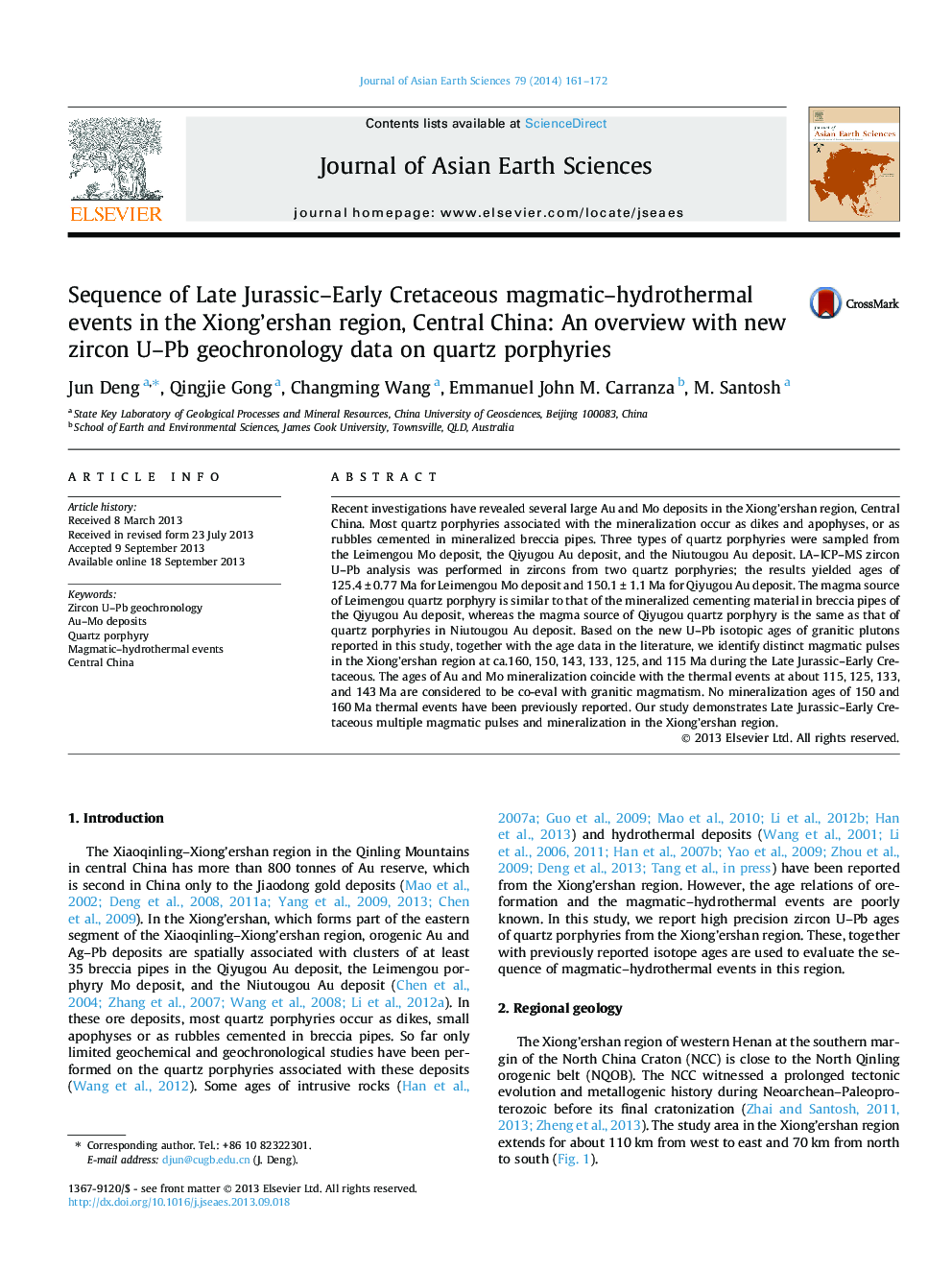| Article ID | Journal | Published Year | Pages | File Type |
|---|---|---|---|---|
| 4730898 | Journal of Asian Earth Sciences | 2014 | 12 Pages |
•Zircon U–Pb ages from quartz porphyries indicate 125.4 ± 0.77 Ma for the Mo and 150.1 ± 1.1 Ma for Au deposit.•Ages of Au and Mo mineralization coincide with the thermal events at about 115, 125, 133, and 143 Ma.•Multiple magmatic pulses and mineralization in the Xiong’ershan region.
Recent investigations have revealed several large Au and Mo deposits in the Xiong’ershan region, Central China. Most quartz porphyries associated with the mineralization occur as dikes and apophyses, or as rubbles cemented in mineralized breccia pipes. Three types of quartz porphyries were sampled from the Leimengou Mo deposit, the Qiyugou Au deposit, and the Niutougou Au deposit. LA–ICP–MS zircon U–Pb analysis was performed in zircons from two quartz porphyries; the results yielded ages of 125.4 ± 0.77 Ma for Leimengou Mo deposit and 150.1 ± 1.1 Ma for Qiyugou Au deposit. The magma source of Leimengou quartz porphyry is similar to that of the mineralized cementing material in breccia pipes of the Qiyugou Au deposit, whereas the magma source of Qiyugou quartz porphyry is the same as that of quartz porphyries in Niutougou Au deposit. Based on the new U–Pb isotopic ages of granitic plutons reported in this study, together with the age data in the literature, we identify distinct magmatic pulses in the Xiong’ershan region at ca.160, 150, 143, 133, 125, and 115 Ma during the Late Jurassic–Early Cretaceous. The ages of Au and Mo mineralization coincide with the thermal events at about 115, 125, 133, and 143 Ma are considered to be co-eval with granitic magmatism. No mineralization ages of 150 and 160 Ma thermal events have been previously reported. Our study demonstrates Late Jurassic–Early Cretaceous multiple magmatic pulses and mineralization in the Xiong’ershan region.
